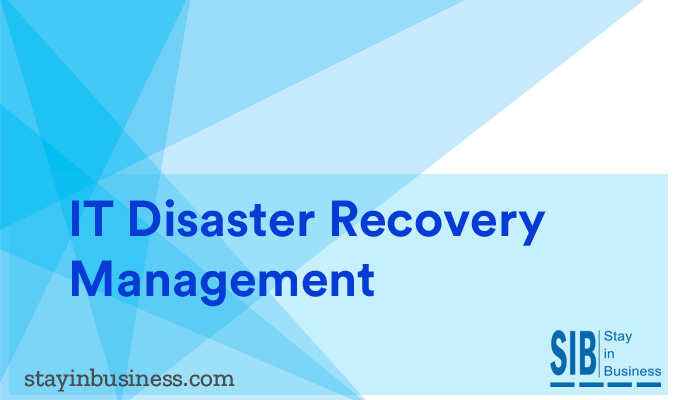
IT is great when things are going smoothly. VOIP, telephones, EDI for transmitting data will handle the numerous day to day activities of an organization and nobody gives it a second thought. The problems begin when IT stops working. When the Data flow gets disrupted, all hell breaks loose and business efficiency is compromised. This is when IT Disaster Recovery Management comes into play.
What is IT Disaster Recovery Management?
Simply put, it is the DR processes which are set in motion when a disaster strikes an organization. How well the DR process works depends on how the DR plan has been crafted and tested. Disaster Recovery Management consists of some important components such as:
- Disaster Recovery Plan
- Business Continuity Plan
- Business Impact Analysis
- Recovery Time Objective
- Recovery Point Objective
Businesses, in the course of their daily operations, generate large volumes of data. Some of this data is critical to the business. The impact of data loss due to factors such as malware, hacking, software corruption etc. could be disastrous and this is where sound IT Disaster Recovery Management systems ensure recovery of data as per set objectives thereby ensuring business continuity.
For IT Disaster Recovery Management some important aspects to be decided upon before finalizing a sound DR Plan and Business Continuity Plan are:
- RTO or Recovery Time Objective – It defines how much time can elapse from the moment of the disaster till the business functions again. The longer the time span, the greater will be the revenue loss.
- RPO or Recovery Point Objective – To what point of time does the business go back to recover data in the case of a disaster? What quantum of work and/or transactions can be lost without it affecting business continuity? Lower times for RTO and RPO will entail a higher cost for DR solutions. Therefore, the business must balance the cost involved with business continuity needs.
To keep costs at reasonable levels businesses tend to focus on only core business activities as a part of their DR plan. Another aspect to be factored in as a part of IT Disaster Recovery Management is the following:
- Cold Site – It is a data center which has idle servers, both physical and virtual, where the regular offsite back-up can be restored to these idle servers. Due to affordability and cost factors, most businesses back-up data once every few hours only. Cold sites are ideal for longer RTO/RPO times.
- Warm Site – These sites have better infrastructure and can handle shorter RTO/RPO times. Since they need active licenses, they cost about the same as the data center itself.
- Geographically dispersed high availability – These sites offer almost real-time back-ups of data. This is done through applicative and network load balancing. This type of back-up requires the use of advanced DNS servers’ management process.
Most businesses are trending towards the use of Virtual Servers for their daily computing needs. This facilitates easier replication of data through internet and WAN links. One of the main advantages of using Virtual Servers is scalability. In such a system, as soon as a disaster strikes, the IT Disaster Recovery Management process moves the business operations to the cloud and business continuity is assured.





